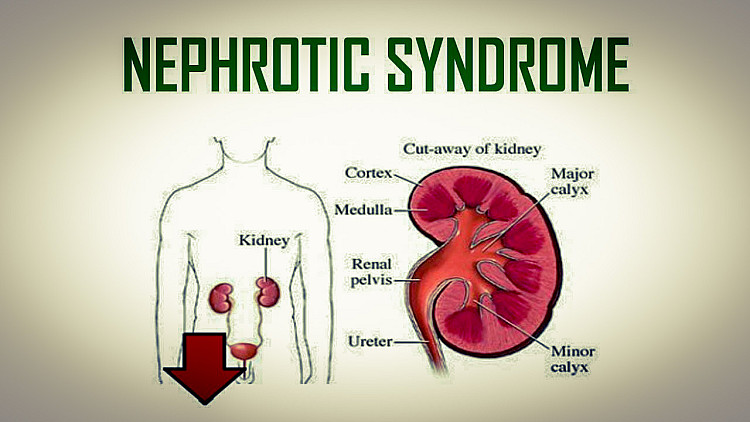What is nephrotic syndrome?
Nephrotic syndrome is a kidney disorder characterized by:
1. Excessive proteinuria: Large amounts of protein are lost in the urine, leading to low levels of protein in the blood.
2. Hypoalbuminemia: Low levels of albumin in the blood, causing fluid to leak out of blood vessels and into tissues.
3. Edema: Swelling in the body, particularly in the legs, feet, and face.
4. Hyperlipidemia: High levels of cholesterol and triglycerides in the blood.
5. Lipiduria: Fat in the urine.
Treatments of nephrotic syndrome may vary from patient to patient due to so many factors.
Causes of nephrotic syndrome
Nephrotic syndrome can be caused by various factors, including:
Primary Causes (directly affecting the kidneys):
1. Minimal Change Disease: Most common cause in children, characterized by minimal changes in kidney biopsies.
2. Focal Segmental Glomerulosclerosis (FSGS): Scarring of kidney filters (glomeruli).
3. Membranous Nephropathy: Thickening of kidney filters (glomeruli).
4. IgA Nephropathy: Immune system disorder causing kidney damage.
5. Congenital Nephrotic Syndrome: Genetic disorders affecting kidney development.
Secondary Causes (underlying conditions leading to nephrotic syndrome):
1. Diabetes: High blood sugar levels damage kidneys.
2. Autoimmune Disorders:
– Lupus
– Rheumatoid Arthritis
– Sjögren’s Syndrome
– Goodpasture Syndrome
Symptoms of nephrotic syndrome
Consequences of nephrotic syndrome include:
General Symptoms:
1. Edema: Swelling in the face, legs, feet, hands, and abdomen.
2. Weight gain: Due to fluid retention.
3. Foamy urine: Protein in the urine causes foam.
4. Fatigue: From anemia and low protein levels.
5. Loss of appetite: Nausea and vomiting.
Urinary Symptoms:
1. Proteinuria: Excess protein in the urine.
2. Hematuria: Blood in the urine.
3. Lipiduria: Fat in the urine.
Other Symptoms:
1. High blood pressure.
2. High cholesterol and triglycerides.
3. Anemia.
4. Infections: Increased risk due to low immunity.
5. Blood clots: Increased risk due to high blood clotting factors.
6. Nutritional deficiencies: Due to malabsorption and low appetite.
7. Growth retardation: In children, due to malnutrition and chronic illness.
8. Kidney failure: Progression to chronic kidney disease or end-stage renal disease.
It’s essential to seek medical attention if you or your child experience any of these symptoms, as early detection and treatment can help manage nephrotic syndrome and prevent complications.
Treatments of nephrotic syndrome
Treatments for nephrotic syndrome aim to:
1. Reduce proteinuria (protein in urine)
2. Manage edema (swelling)
3. Control blood pressure
4. Lower cholesterol
5. Prevent infections
6. Slow kidney damage
Treatments may include:
Medications:
1. Corticosteroids (e.g., prednisone)
2. Immunosuppressants (e.g., cyclophosphamide)
3. ACE inhibitors or ARBs (to control blood pressure)
4. Diuretics (to manage edema)
5. Statins (to lower cholesterol)
Lifestyle Changes:
1. Dietary modifications:
– Low-sodium
– Low-fat
– High-protein
– Balanced carbohydrates
2. Fluid management:
– Monitoring fluid intake
– Avoiding excessive fluid consumption
3. Exercise regularly:
– To maintain physical fitness
– To reduce blood pressure
4. Stress management:
– To reduce emotional stress
Other Interventions:
1. Kidney biopsy:
– To determine underlying cause
2. Dialysis:
– If kidney function is severely impaired
3. Kidney transplantation:
– If kidney failure occurs
It’s essential to work closely with a healthcare provider to develop a personalized treatment plan, as the approach may vary depending on the underlying cause, severity, and individual needs.
Treatments of nephrotic syndrome in developed countries
In developed countries, treatments for nephrotic syndrome may include:
1. Immunosuppressive therapy:
– Corticosteroids (e.g., prednisone)
– Calcineurin inhibitors (e.g., cyclosporine)
– Mycophenolate mofetil
2. Biologic therapies:
– Rituximab (for steroid-resistant cases)
– Belimumab (for lupus-related nephrotic syndrome)
3. Cytotoxic therapy:
– Cyclophosphamide (for severe cases)
4. Supportive care:
– Diuretics (e.g., furosemide)
– ACE inhibitors or ARBs (for blood pressure control)
– Statins (for cholesterol management)
– Low-sodium diet
– Fluid management
5. Kidney transplantation:
– If kidney failure occurs
6. Plasma exchange:
– For severe cases with high levels of antibodies
7. Hemodialysis or peritoneal dialysis:
– If kidney function is severely impaired
8. Novel therapies:
– Eculizumab (for atypical hemolytic uremic syndrome-related nephrotic syndrome)
– Bortezomib (for multiple myeloma-related nephrotic syndrome)
In addition to these treatments of nephrotic syndrome, patients in developed countries may also have access to:
1. Regular monitoring:
– Blood tests
– Urine tests
– Blood pressure checks
2. Multidisciplinary care:
– Nephrologists
– Transplant specialists
– Dietitians
– Social workers
3. Clinical trials:
– Access to new and experimental treatments
Please note that treatments of nephrotic syndrome may vary depending on individual circumstances, and it’s essential to consult with a healthcare provider for personalized guidance.
What should someone does during nephrotic syndrome?
During nephrotic syndrome, it’s essential to:
1. Follow treatment plans: Adhere to medication regimens, dietary recommendations, and lifestyle modifications prescribed by your healthcare provider.
2. Monitor fluid intake: Balance fluid consumption to manage edema and prevent dehydration.
3. Maintain a healthy diet:
– Low-sodium
– Low-fat
– High-protein
– Balanced carbohydrates
4. Exercise regularly: Engage in moderate physical activity to reduce blood pressure and maintain overall health.
5. Manage stress: Practice stress-reducing techniques, such as meditation or deep breathing exercises.
6. Get enough rest: Aim for 7-8 hours of sleep per night to help your body recover.
7. Stay hydrated: Drink plenty of water to prevent dehydration.
8. Avoid infections: Practice good hygiene, avoid close contact with people who are sick, and get vaccinated against infections like pneumonia and influenza.
9. Monitor blood pressure: Regularly check blood pressure to ensure it’s within a healthy range.
10. Attend follow-up appointments: Regularly visit your healthcare provider to monitor progress and adjust treatment plans as needed.
11. Be aware of complications: Recognize signs of potential complications, such as blood clots, infections, or kidney failure, and seek medical attention promptly.
Remember, working closely with your healthcare provider and making lifestyle adjustments can help manage nephrotic syndrome and prevent complications.
Visit us
External links:

2 thoughts on “Treatments of nephrotic syndrome”